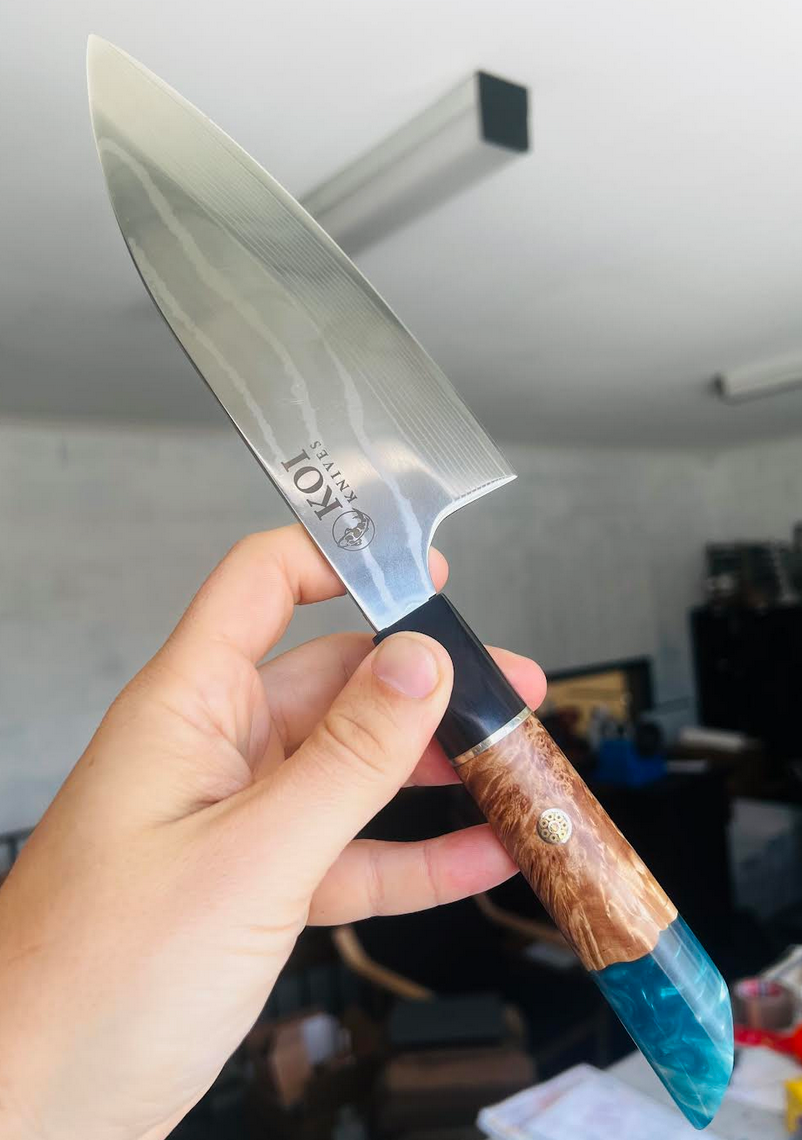Originating from Saiko Japan in the Edo era around the mid-19th century, the Japanese Deba knife is a single-bevelled knife with a pointed blade originally made to filet fish but is now used to fillet poultry and other meat with small bones. One interesting fact however is that it was the Portuguese who brought these knives into the limelight as they would often use the Deba to chop tobacco before exporting. It is one of the three basic knives every Japanese blacksmith must be able to produce. The other two are the Yanagiba and the Nakiri.
Meaning of Deba
The Hon-Deba (translates to “authentic pointed carving knife”) has a wide heel and a wide sturdy spine which tapers along its length, terminating in a thin and sensitive tip. The Deba is used to make clean cuts. It is majorly utilized in the filleting of fish and some instances removal of meat from the bones without causing any injury to the flesh.
Design, Specifications and Application
The combination of a good balance and a thin blade tip results in a knife that is relatively versatile and good for doing delicate work. The combination of a good balance and a thin blade tip results in a knife that is relatively versatile and good for doing delicate work. The design of this knife is very intentional, it allows one to make deep, precise cuts, being in control of the amount of pressure exerted on the knife. The pointed, sensitive tip is useful for telling if the user has gotten to the bone of the animal. This is an ideal feature for a fillet knife. The tip of the blade is also designed to slide effortlessly along fish bones with the unsharpened side of the blade creating an air pocket that allows the knife to penetrate food with ease and adequate force.
The Deba comes in various sizes and lengths to be able to correctly fillet the different sizes and species of fish and seafood. There is the Ko-Deba (translates to “small Deba”), Miorishi Deba (translates to “fillet Deba”). The Hon-Deba (“true Deba”) is the heaviest version of the Deba and is typically between 150mm - 330mm long, with the 180mm length recommended for home use and the longer sized Deba for professional use. The Kanisaki-Deba ('crab Deba') is a unique type of Deba particularly used for cutting and filleting shellfish such as crabs. The blade length ranges from 180mm to 210mm, nevertheless this knife is especially unique as the cutting edge is ground on the left side for right-handed knives - i.e. on the reverse side to a standard Hon-Deba. This is done to stop the knife edge from cutting into the crab meat when cutting into the crab's rigid shell.
The Deba knife because of its significant weight and sturdiness, as well as its design can be used to perform a variety of functions.
The heel can be used to cut through bones found in small to medium-sized meat or fish. The tip is used for boning while the centre of the edge is used for slicing through. The Deba can also be used to remove fish heads and when used correctly, it can safely be used to cut open the legs and claws of crabs. Despite its heaviness and sturdiness, this knife should not be used to cut through large bones or the blade edge subjected to sideways force as this might crack or chip the knife.
Conclusion
By now you would probably have guessed the kind of restaurants where you would see Deba knives – yes that’s right! Sushi restaurants. These knives are indeed a spectacle in Sushi restaurants that have open kitchen concepts. The Deba knife is indeed one of a kind with a cutting edge design and class, a spine of stability backed by years of history. It is no doubt the pride of every chef.


